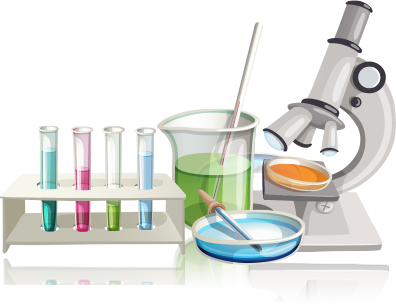You’ve probably heard of the chemical calcium in milk. But calcium shows up in lots of other stuff too. For example, the hard part of your bones and teeth is made from calcium connected to a chemical called “phosphate”. Together, they make the substance, calcium phosphate. Sidewalk chalk is made from calcium and sulfate, which makes calcium sulfate. One of the most common chemicals connected to calcium is called “carbonate”, and together they make calcium carbonate.
Calcium carbonate is in eggshells, seashells, a rock called marble, and in antacid tablets like Tums and Rolaids. In this activity, you can use a common liquid to detect calcium carbonate!
Here's what to do:
- Cover your work surface with newspaper or paper towels. Place some egg shell and an antacid tablet on your work surface.
- Use the back of a tablespoon to crush the egg shell as much as you can.
- Wipe off the spoon and use it to crush the antacid tablet. If it is very hard to crush, ask your adult partner to help you crush it. (It’s easier to crush the tablet if you start from the edge rather than the middle.)
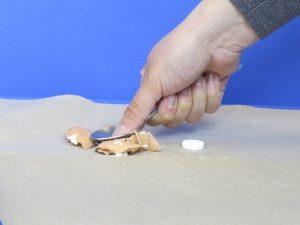
- Place the crushed eggshell and antacid tablet in a piece of paper.
- Place 1 Tablespoon of water and 1 Tablespoon of vinegar in each of two small plastic cups.
- Pick up about the same amount of eggshell in each hand and place the eggshell in each cup at the same time. After about 2 to 3 minutes, what do you observe?
- Repeat steps 5 and 6 for the antacid tablet. What do you observe?
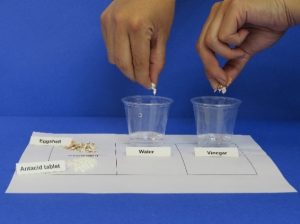
What to expect
The eggshell and the antacid tablet shouldn’t do anything interesting in the water but they should cause bubbling in the vinegar.
What's happening in there?
Vinegar is an acid called acetic acid. When it combines with calcium carbonate in eggshell and in the antacid tablet, a chemical reaction takes place. In the reaction, the atoms in the acetic acid and the calcium carbonate come apart and rearrange in different ways to make new chemicals. One of these chemicals is the gas carbon dioxide. That's why you see the bubbles!
What else could you try?
If vinegar and calcium carbonate react to make different chemicals, the calcium carbonate that was there at the beginning of the reaction is not there at the end of the reaction. What do you think would happen to a raw egg if it were left in vinegar for a couple of days? Let's try it and find out!
What you'll need:
- Egg
- Vinegar
- Clear cup or jar
- Aluminum foil
- Tablespoon
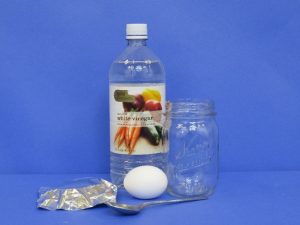
Be safe
Be sure to review the safety instructions on page 1 before proceeding.
Here's what to do:
- Cover your work surface with newspaper or paper towels. Carefully place the egg in a cup and add enough vinegar to completely cover the egg.
- Cover the top of the cup with aluminum foil. Leave the egg in the vinegar for one day. When you look at the egg, what do you notice?
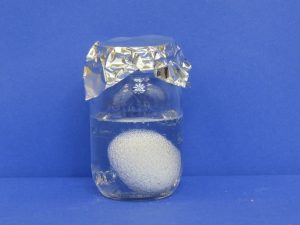
- After one day, use a tablespoon to carefully remove the egg. Pour out the vinegar and carefully put the egg back in the cup. Again, add enough vinegar to completely cover the egg.
- Leave the egg in the vinegar for another full day. At the end of the second day, use a tablespoon to carefully remove the egg.
What do you notice about the shell? How is it different from when you put it in? What do you think caused it to look and feel the way it does?
What's happening in there?
The vinegar and calcium carbonate react and the eggshell breaks down leaving the flexible inner membrane covering the egg. After two or three days in the vinegar, the shell should be completely broken down. The egg will be larger than when it had the shell on due to liquid absorbed through the membrane. You can carefully rinse off the shell residue from the membrane to clearly see the egg without the shell.
